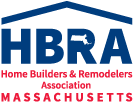Family gatherings near the fireplace during the fall are a cherished memory for many home owners. Fireplaces serve as a functional and fashionable feature in your home. As the temperatures turn colder in the coming months, home owners turn to fireplaces, wood stoves and other fuel-fired appliances as the primary heat source.
Home owners often skip regular maintenance on fireplaces since they are in use only a couple of months out of the year. Unfortunately, this type of neglect can sadly sometimes end in tragic results. Everyone has seen the news stories about homes burned to the ground and lives lost due to improperly disposed-of fireplace ashes. According to the U.S. Fire Administration (USFA), heating fires caused approximately 600 injuries, 165 deaths and $367 million in property loss from 2017-2019.
 Here are some tips to make sure your fireplace remains a safe, enjoyable feature of your family’s home:
Here are some tips to make sure your fireplace remains a safe, enjoyable feature of your family’s home:
- Clean your chimney thoroughly once a year. The flammable residue that accumulates in the flue can lead to fires in the chimney. You can find a certified chimney specialist thought the Chimney Safety Institute of America (csia.org).
- Use a metal mesh screen or glass doors—or both—as a barrier between the fireplace and hearth, the floor of your fireplace which extends a short distance. If you have glass doors, leave them open while burning a fire so that the fire receives enough air to ensure complete combustion and keeps creosote from building up in the chimney. Keep the mesh screen closed when a fire is burning to keep embers or sparks from entering the room.
- Use only seasoned hardwood, as non-seasoned (or green) wood tends to smoke more and burn less efficiently and can leave significantly more resin and soot in your chimney. Never use flammable liquids to start a fire, or burn cardboard boxes, trash or debris in your fireplace.
- Never leave a fire unattended. Before going to bed or leaving your home, make sure the fire is completely out. Douse and saturate ashes with water, and never empty ash directly into a trash can. Place completely cooled ashes in a tightly covered metal container and keep the container at least 10 feet away from any building.
- Keep the roof clear of leaves, pine needles and other debris. Also, cut away any branches that are hanging above the chimney.
You can find more fire safety tips on USFA’s website at usfa.fema.gov/prevention.
Taking these steps will help ensure that the time you spend around your fireplace in the fall is enjoyable and that your family and home are safe. For more home maintenance tips, contact your local association, here or visit nahb.org.

